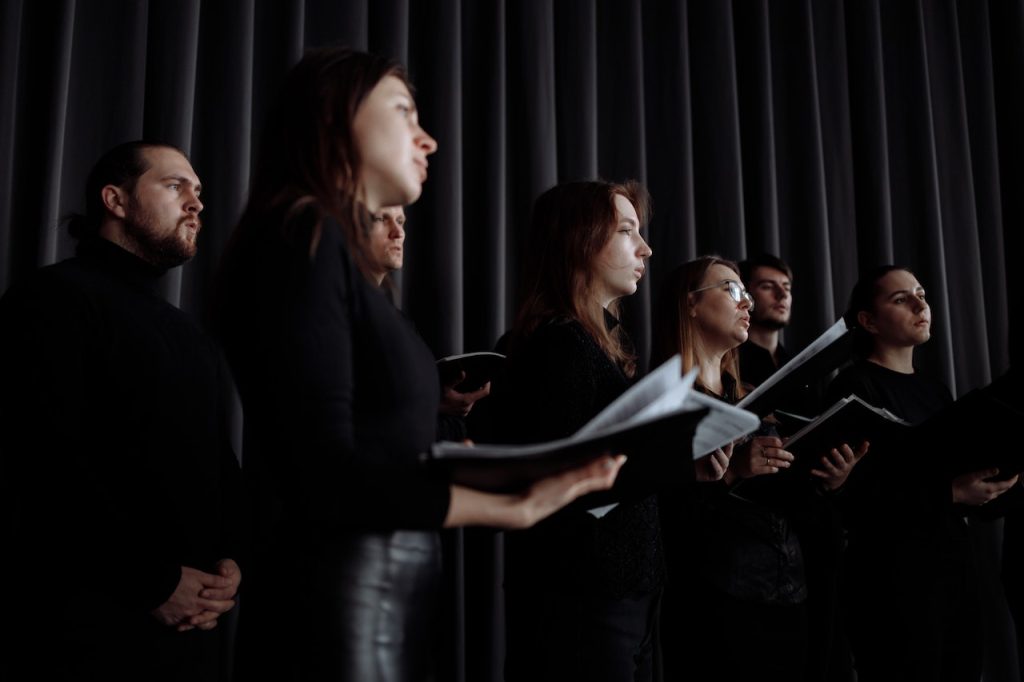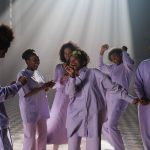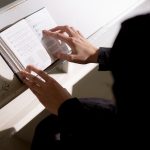Five Lessons for After the Choir Concert
We are nearing the end of winter concert season – to all our teachers and choral musicians congratulations! But now many choir teachers have reached that awkward after-the-choir-concert limbo. The festivities are complete but the students are still around for a week or two more. Once you have your class viewing and critique of the concert recording and your end of the year choir party, what else do you do!?
A lot of teachers like to use this time to get ahead on next semester’s work, but I argue this is the best time of year for some team-building, music-creating, and connection-building. With this in mind, I present to you five of my favorite lessons for after the choir concert for your consideration:
- Arrange and Perform with iPad Bands for Choir
- Get to Know Other Choral Sounds with Critical Listening 101
- Explore the Voice with a Vocal Health Day
- Get Creative with an Introduction to Composition
- Read and Respond to Music Outside Your Curriculum

After the Choir Concert…Now What!?
During my first couple of years of teaching choir, I would use the weeks after the final choir concert of the semester to work ahead on music for next semester. This was great until we returned from break and students had forgotten all of the work we did or were bored with the music by week two of the new semester.
So in response, I began planning mini-units for this awkward two-week period in an effort to engage students in music beyond our choral repertoire. We used this time to explore learning piano basics or checking in on musicians’ wellness or starting music compositions. These activities not only built student musicianship in a variety of ways, but also strengthened student bonds in the process.
Below I share some activities that I have tried and/or wish that I had tried with my middle school and high school students after the choir concert:

Make an iPad Band!
I am obsessed with iPad Bands. If you haven’t heard of this before, an iPad band is a group of 5-6 individuals with iPads (or any tablet, cell phone, or computer with speakers) that perform popular music utilizing their technology as instruments.
To introduce this project to students, I generally share a video of an iPad band (like this one), give them the parameters of the assignment, and then set them free. My instructions are as follows:
- Split up into groups of 4-5.
- Choose a piece of popular music that you would like to perform, find chord charts for your song, and run them past me for approval. I look out for appropriateness of topic as well as difficulty of chord structure.
- Determine who will play what instrument and find the appropriate apps for your technology. GarageBand will fulfill most needs, but you can find free instrument apps for pretty much any instrument.
- Prepare at least one verse and one chorus of your chosen song. Everyone should sing at least once during your performance.
- We will rehearse this Monday and Wednesday, Be prepared to share with the class on Friday.
Modifications might include larger or smaller group sizes, more or less time to prepare, and length of performance expectation.
In my experience, students do not need much help with finding their app instruments or chord charts, but they do often need guidance on organizing their group structure and determining how much exactly to perform. Leaders will step up who surprise you and you will find out who your tech wizzes are quickly. This project is fun, low-stress, and introduces many students to the joy of jamming with other musicians in a small-group setting.

Listen to Other Choirs
A key to developing our individual style as musicians is listening to and learning from others. Watching other choirs perform their music helps us as choral musicians examine a variety of repertoire, choral tones and expression, and musical interpretations.
Recently, many colleges and universities have begun broadcasting their concerts. This is a great resource for middle school and high school choir teachers who would like to show their students future opportunities without having to take a physical field trip. With a simple search of “Arkansas University Music Department Concerts” I was able to find the following recent area university choir concerts:
- Arkansas State University’s Sounds of the Season Winter Concert
- The University of Arkansas Selections from their Winter Concert
- The University of Central Arkansas Concert Choir and Chamber Singers Winter Concert
Questions we might ask ourselves as we listen to a choral program include:
- What is this choir doing that I like or admire and would like to replicate? How might I do that?
- What is this choir doing that I don’t like and want to proactively work against in my own work? How might I accomplish that?
- What stylistic decisions has the choir or director made? How are these communicated? How might we use these ideas in our own performance?
- How does the program flow? Do the pieces of repertoire compliment each other? Are there any pieces that just don’t fit?
- Are the pieces interpreted well? Are there any performance decisions that I love and want to replicate or that I disagree with and want to discourage within my group?
Join my email list below and get my free concert listening worksheet!

Have a Vocal Wellness Moment
On my first day of fourth grade band, I was assigned a “parts of the trumpet” worksheet. We had to label each part of the trumpet and color in the page. Why is it not standard procedure to do the same for the voice!?
I am continually surprised by how few of my students (regardless of age) actually understand their vocal instrument. Therefore I have built in vocal wellness moments throughout the course of the semester. Here are a few ideas for vocal wellness moments for after the choir concert:
- Color diagrams of the respiratory system and larynx
- Learn how to perform a laryngeal massage (start at minute 4 of this video)
- Play around with Semi-Occluded Vocal Tract (SOVT) exercises
- Explore Voice Science Works Vocology Toolbox, Warm-Ups & Exercises, and Handouts
- Build your own larynx with paper or play-dough
- Ask the Anatomy teacher to guest lecture about the respiratory system and vocal mechanism
- Teach students how to track their vocal ranges and set up a procedure for checking in over the course of the next semester
The more we know about our instruments, the better! What other vocal wellness moments have you used before or after the choir concert? Let me know in the comments below!

Start Some Compositions
So often choirs get stuck in the “Perform” domain of the National Arts Standards: Create, Perform, Respond, Connect. After the choir concert is a perfect time to check in on our singers’ abilities to create, respond, and connect to choral music and beyond. An introduction to composition or songwriting is one way to approach these domains.
A few composition project ideas utilizing free resources to get your students started:
- Using Noteflight (sign-up free), create an 8 measure composition for four voices. Begin with a melody (in any voice part) and build your harmonies accordingly. Consider key, range, voice-leading, lyrics (neutral syllables or words), and resolution. Use your ear and/or your music theory knowledge to guide your compositional decision.
- Using Soundtrap (30-day free trial), create a 30 second composition. Utilize loops, the patterns beat maker, synth, and recorder. Play with reverb, panning, and volume throughout. Listen, adjust, and save as you go.
- Play around in the completely free Chrome Music Lab. Once you have thoroughly explored the experiments, visit the Song Maker experiment and create an eight-measure loop (change in settings). Create a percussion line and a melody line, using any instrument of your choosing.
Depending on student access and school resources, GarageBand, Finale, and Sibelius are also great resources for exploring composition.

Get to Know Some Choral Music Beyond Your Performance Material
Just as English teachers assign independent reading or Social Studies teachers assign current events reports, Choir teachers should be expecting their students to interact with choral music outside of the classroom.
Inspired Choir is a great place for students to start their exploration of choral music outside of their in-class repertoire. Every repertoire post includes a free reading comprehension worksheet tailored to that specific post. Below are a few of my favorite posts for students:
- Celebrate South Africa with Modimo arranged by Michael Barrett
- The Simple Joys of Malay Music: Yu Hang Ta’s Ikan Kekek
- Explore The Peace of Wild Things by Jake Runestad
- Ease into Barbershop with Feliz Navidad arranged by Tom Gentry
Fill in the form below to immediately grab the most recent winter concert worksheets! Find all other worksheets at the bottom of their post page.
I’d Love to Hear from You!
Have you tried any of these after the choir concert lessons with your ensemble? How did they go? What other activities do you love to do after the choir concert is over? Let me know in the comments section below!
Enjoying the Inspiration?
I have more Take Five For Inspiration Posts for you! Take a look:
- Five Questions to Ask After the Choir Concert
- Five Tips for Practicing Your Choir Music
- Five Ways to Center Black Creatives in Your Choir
- Five Contemporary Choral Composers to Highlight During Women’s History Month 2023
Lesson Plan Bundles
After the choir concert means it’s time to program next semester’s music! Have you programmed any of the pieces covered on the blog this coming semester? Let me share my teaching resources with you! Check out the Inspired Choir Shop for lesson plan bundles with five short and transferable lessons, all with connections to National Standards and SEL Competencies.















